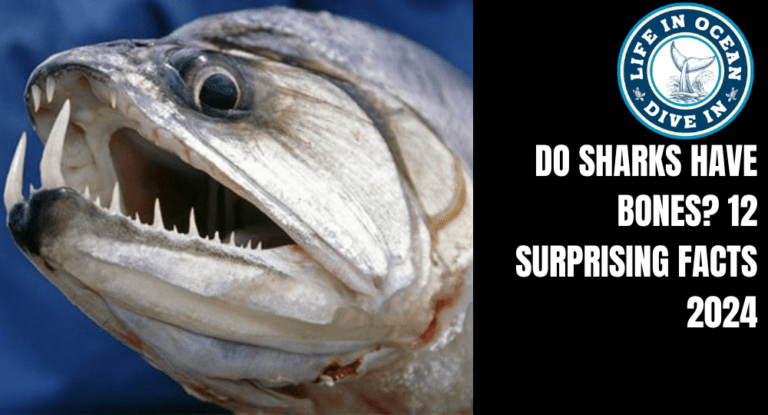Did you know that killer whales and great white sharks are both apex predators, but their differences in hunting and communication significantly differ? Understanding the dynamics of shark vs killer whale populations and terms is crucial for comprehending marine ecosystems. In this post, we’ll delve into the history of fascination with orcas and great white sharks, highlighting the importance of studying their interactions. We’ll explore the differences in their behavior, speed, lifespan, and impact on prey populations.
Get ready to uncover intriguing insights into these remarkable creatures’ roles as top predators in the deep blue ocean, including the killer whale’s fight for dominance.
Table of Contents
Orca vs Great White Shark: The Ultimate Showdown
Size and Strength
Sharks are known for their streamlined bodies, powerful jaws, and razor-sharp teeth. The great white shark, in particular, can grow up to 20 feet in length and is equipped with rows of serrated teeth designed for tearing through flesh. On the other hand, orcas, also known as killer whales, are the largest members of the dolphin family. They possess immense strength and speed due to their muscular bodies and large tails.
Both predators, the killer whale, and the orca, exhibit remarkable physical attributes that make them formidable hunters in their respective environments.
Hunting Techniques
Great white sharks rely on stealth and ambush tactics. Their keen sense of smell helps killer whales locate prey from a distance before launching a sudden attack. Conversely, orcas employ sophisticated teamwork during hunts. They work together to corral their prey before delivering precise strikes using their powerful jaws.
The contrast in physical attributes between these apex predators, such as the killer whale vs the great white shark, contributes to the fascinating dynamics of their interactions in the wild.
Anatomy of an Alpha: Physical Traits Comparison
Unique Adaptations
Killer whales, also known as orcas, have distinct black-and-white coloring, which helps them blend in with the sunlight when seen from below. On the other hand, great white sharks possess a gray upper body that camouflages them from above and a white underbelly that conceals them from their prey. These unique colorations are essential for both species’ hunting strategies.
Orcas have powerful tails that allow them to reach impressive speeds while swimming. Their sharp teeth are designed to grasp and tear apart prey efficiently. Conversely, great white sharks boast streamlined bodies and powerful jaws filled with rows of serrated teeth. These physical attributes enable these predators to swiftly ambush their targets underwater.
Both creatures exhibit remarkable intelligence and social behaviors within their respective groups. Orcas form tight-knit pods where they communicate using various vocalizations, coordinate hunts effectively, and even pass down hunting techniques through generations. Meanwhile, great white sharks rely on acute senses such as smell and electromagnetic fields to detect potential prey over vast distances.
Apex Predator Roles
The distinct physical traits of orcas and great white sharks play vital roles in maintaining their status as apex predators within marine ecosystems. Orcas’ speed, agility, teamwork skills, and diverse diet give them an edge in capturing a wide range of prey including fish, seals, dolphins – even other whales! Great whites‘ stealthy approach combined with their exceptional sense of smell enables them to hunt large marine mammals like seals by surprise.
- Sharks and killer whales are both super cool predators of the ocean, each with their special skills for hunting.
- Let’s talk about the pros first.
- Sharks have been around for millions of years and have evolved some amazing features to help them hunt, like their super sharp teeth and streamlined bodies that let them move through the water fast. Killer whales, on the other hand, are super smart and work together in groups to catch their prey. They use teamwork to surround their prey and then take turns attacking it.
- Now, let’s talk about the cons.
- When these two top predators share the same habitat, things can get a little intense. Sharks and killer whales sometimes end up competing for the same food, which can lead to conflicts. This competition can cause stress for both species and even lead to some pretty epic battles. It’s important to remember that both sharks and killer whales play a vital role in keeping the balance of the ocean ecosystem. They help control the populations of other marine animals, which is super important for keeping everything in check. So, while they might have their differences, they’re both essential parts of the ocean’s food chain.
Habitat and Social Behavior of Shark vs Killer Whale

Contrasting Habitats
Orcas, also known as killer whales, are found in ocean environments worldwide. They prefer colder waters such as the Arctic and Antarctic regions. In contrast, great white sharks tend to inhabit coastal areas where water temperatures are warmer. These sharks can be found in various oceans around the world, including the Atlantic, Pacific, and Indian Oceans.
Great white sharks are solitary creatures that typically roam their territories alone. On the other hand, orcas are highly social animals that live in groups called pods. These pods consist of multiple generations of orcas led by a matriarch who plays a crucial role in guiding the pod’s movements and behaviors.
Impact on Predatory Behaviors
The distinctive habitats preferred by these two apex predators greatly influence their predatory behaviors. For example, great white sharks rely on stealth and surprise when hunting for prey near coastlines. Their ability to blend into their surroundings makes them formidable hunters.
In contrast, orcas’ complex social structure enables them to work together when hunting for food. They often use sophisticated techniques to catch prey such as herding schools of fish or coordinating attacks on larger marine mammals like seals or even other species of whales.
Predatory Behavior of Orcas and Great White Sharks
Hunting Techniques
Orcas, also known as killer whales, are highly skilled hunters who use teamwork to capture their prey. They often work together to create waves that can knock seals off ice floes. Meanwhile, great white sharks rely on stealth and speed to surprise their prey from below.
Both predators exhibit distinct hunting techniques; orcas employ coordinated group tactics while great white sharks utilize ambush strategies. Orcas have been observed stunning stingrays with their tails before consuming them, showcasing their intelligence in hunting techniques.
Varied Prey Preferences
Killer whales have a diverse diet that includes fish, squid, seabirds, and even other marine mammals such as seals and sea lions. On the other hand, great white sharks primarily feed on marine mammals like seals and sea lions but will also consume fish and smaller sharks when the opportunity arises.
While killer whales display versatility in their prey preferences due to their social structure enabling them to hunt cooperatively for different types of prey based on availability, great white sharks demonstrate a more specialized preference for specific marine mammal species due to their solitary nature.
Role of Intelligence
The intelligence of orcas plays a crucial role in devising complex hunting strategies. Their ability to learn from one another allows for the transmission of unique feeding behaviors within groups over generations. Conversely, the predatory behavior of great white sharks is driven by instinctive patterns honed through evolution rather than learned behaviors passed down through social interactions.
Battle of the Titans: Tactics and Strategies
Strategic Advantages
Each predator leverages unique advantages. Great white sharks possess tremendous bite force, allowing them to deliver devastating attacks on their prey. On the other hand, orcas are highly intelligent and often hunt in groups, displaying strategic teamwork as they surround and overwhelm their targets.
Great white sharks rely on stealth and surprise when hunting, using their keen sense of smell to detect blood in the water from great distances. Once they locate potential prey, they launch rapid surprise attacks with incredible speed and power. In contrast, killer whales employ sophisticated tactics such as corralling their prey into tight groups before launching a coordinated assault.
The territorial disputes between these apex predators reveal intriguing behavioral patterns. Orcas have been observed strategically targeting specific organs of sharks during confrontations – primarily attacking the liver due to its high energy content. This calculated approach demonstrates the orcas’ tactical understanding of maximizing resources while minimizing risk.
Intriguing Behavioral Patterns
In confrontations between sharks and killer whales, fascinating behavioral dynamics come into play. When faced with an aggressive orca pod, great white sharks exhibit evasive maneuvers by swiftly retreating from the area – showcasing a rare display of caution from these formidable hunters. Conversely, orcas demonstrate remarkable coordination when engaging with sharks, employing synchronized movements that unsettle and disorient their adversaries.
The battle between these oceanic titans, killer whale vs great white shark, is not merely a clash of raw power but also a showcase of cunning strategies employed by both predators.
Key Differences Between Great White Sharks and Killer Whales
Diet
Great white sharks primarily feed on marine mammals like seals and sea lions, as well as fish such as tuna and rays. On the other hand, killer whales, also known as orcas, have a more diverse diet that includes fish, squid, seabirds, and even other marine mammals like seals and dolphins.
Hunting Methods
When hunting for prey, great white sharks use their remarkable speed and agility to ambush their targets from below. They rely on surprise attacks to catch their prey off guard. Conversely, killer whales are highly intelligent pack hunters who work together to corral their prey using strategic maneuvers before making a coordinated attack.
Both predators exhibit different approaches. The great white shark’s solitary nature makes it an efficient lone hunter relying on stealthy tactics while orcas’ teamwork enables them to take down larger animals through collaborative efforts.
Factors in a Hypothetical Fight: Size, Strength, and Intelligence
Size
The size of a predator can significantly impact the outcome of a fight. A killer whale, also known as an orca, is larger than most shark species. Its sheer size gives it an advantage in terms of physical presence and intimidation.
When comparing the size of a great white shark to that of a killer whale, we find that the average adult male great white shark measures around 11-13 feet in length, while female ones are typically larger at 15-16 feet. In contrast, adult male killer whales generally range from 20 to 26 feet long, and females from 16 to 23 feet.
Strength
Strength plays a crucial role in determining the effectiveness of an attack or defense strategy during confrontations between predators. Killer whales are known for their remarkable strength and power when hunting prey such as seals or even other marine mammals.
A killer whale’s powerful tail fin enables it to reach impressive speeds while propelling itself through water with immense force. This strength gives them an edge over sharks when engaged in potential combat scenarios due to their ability to deliver powerful blows.
Determining the Apex Predator: Who Reigns Supreme?

Real-Life Encounters
Real-life encounters between sharks and killer whales provide valuable insights into their interactions. In some instances, orcas have been observed hunting and killing sharks. These encounters highlight the formidable hunting skills of killer whales, showcasing their ability to take down large predators like great white sharks.
In contrast, there are documented cases of great white sharks feeding on smaller or younger killer whales. These events demonstrate the predatory prowess of great whites and orca vs killer whales emphasizing their position as apex predators in certain marine ecosystems.
Hypothetical Showdowns
When considering hypothetical showdowns between these two apex predators, it’s essential to acknowledge the diverse hunting strategies employed by each species. While killer whales are highly intelligent pack hunters with sophisticated cooperative tactics for taking down prey, great white sharks rely on stealth and brute force to ambush their targets.
In a hypothetical face-off between a shark and a killer whale, factors such as environmental conditions would play a crucial role in determining the outcome. For instance, shallow waters might favor the agility of sharks due to their streamlined bodies, while deeper ocean environments could provide an advantage to killer whales with more space for maneuverability during an encounter.
Conclusion
You’ve delved into the depths of the ocean to witness the clash of titans between killer whales and great white sharks. Their physical traits, predatory behaviors, and tactical prowess have been scrutinized to determine the ultimate apex predator. Killer whale vs great white shark As we continue to unravel the mysteries of the natural world, let this showdown remind us of the awe-inspiring power and complexity of marine life.
Now, armed with a newfound understanding of these oceanic juggernauts, consider how we can contribute to the conservation and preservation of these magnificent creatures. Whether through supporting marine sanctuaries, advocating for sustainable fishing practices, or spreading awareness about marine ecosystems, we all have a part to play in ensuring the continued thriving existence of orcas and great white sharks in our oceans.
Frequently Asked Questions
Can killer whales and great white sharks coexist in the same habitat?
Yes, both species can inhabit the same waters, but they have distinct behaviors and feeding patterns that minimize direct competition. Killer whales hunt in pods and have a diverse diet, while great white sharks are solitary hunters with a more specialized prey preference.
Who would win in a fight between a killer whale and a great white shark?
In an encounter between these apex predators, the killer whale (orca) has the advantage due to its larger size, intelligence, and complex social structure. Orcas have been observed hunting and killing great white sharks as part of their natural predatory behavior.
Are there any similarities in the physical traits of killer whales and great white sharks?
While both animals possess powerful bodies adapted for hunting, their physical characteristics differ significantly. Killer whales are highly intelligent mammals with streamlined bodies ideal for agile movement, whereas great white sharks boast streamlined torpedo-shaped bodies built for speed and stealthy attacks.
What makes one species an apex predator over the other?
The orca’s superior intelligence, cooperative hunting strategies within pods, and diverse diet options including marine mammals and fish make it an apex predator that reigns supreme over most oceanic creatures. In contrast, while formidable hunters, great white sharks primarily target specific prey such as seals, sea lions, orcas vs killer whales.
How do killer whales’ predatory tactics differ from those of great white sharks?
Killer whales exhibit sophisticated teamwork when hunting large prey like seals or even other marine predators such as sharks. On the other hand, Great White Sharks rely on surprise attacks from below to ambush their targets using brute force to incapacitate them.







